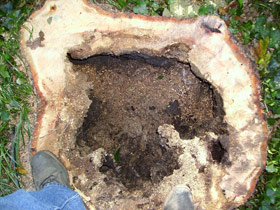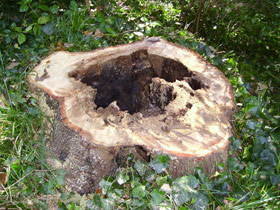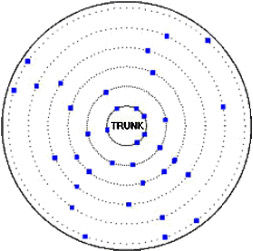Tree Radar Evaluations
Tree Scanning Technique
The scanning of a tree is a simple process that is completed on site. Several elevations which are designated to measure the tree are marked into the tree. During the course of the scanning, the handheld receiver of the TRU moves around the tree at the location allowing the equipment to send pulses into the tree to record any signals that are reflected from inside. In order to scan root masses, the receiver is positioned at ground level on top of a small cart which is moved around the tree as the TRU records data. It can take anywhere from one to several hours in order to record all of the data which depends on the set up time at the site and the size of the tree.
Data Analysis Report
The TRU collects data that is processed using a signal analysis. The signal process works in conjunction with a software package that has been specifically designed for the unit. Following this, the information is translated onto a report. After a trunk scan, every graphic representation shows a cross section of the tree trunk that was scanned and information will include the amount of healthy wood as well as the amount and location of any decay that is present in the tree trunk.


Root Scan Analysis
 When a root scan analysis is performed, the location of the roots under the scanned area is fully plotted. It is possible for several depths to be plotted at a time down to 1 meter of the TRU penetration. Tree Radar Inc. will provide a full report along with the plot(s) being analyzed. Matthew’s Tree Service Inc. consequently uses this information in order to prepare a formal tree risk analysis and report. The report will include any pertinent information necessary to link the technical information in the TRU with the arboricultural treatment and follow up recommendations.
When a root scan analysis is performed, the location of the roots under the scanned area is fully plotted. It is possible for several depths to be plotted at a time down to 1 meter of the TRU penetration. Tree Radar Inc. will provide a full report along with the plot(s) being analyzed. Matthew’s Tree Service Inc. consequently uses this information in order to prepare a formal tree risk analysis and report. The report will include any pertinent information necessary to link the technical information in the TRU with the arboricultural treatment and follow up recommendations.

